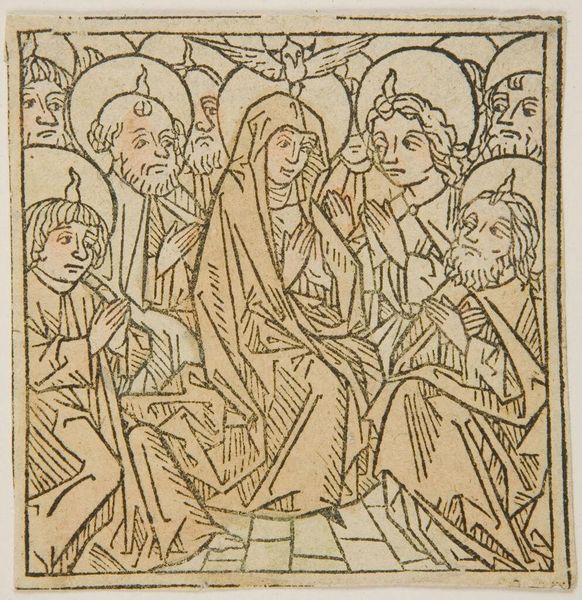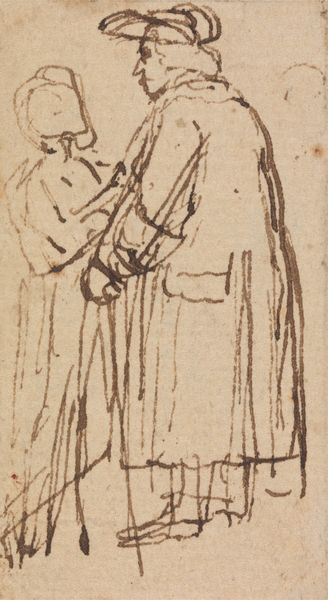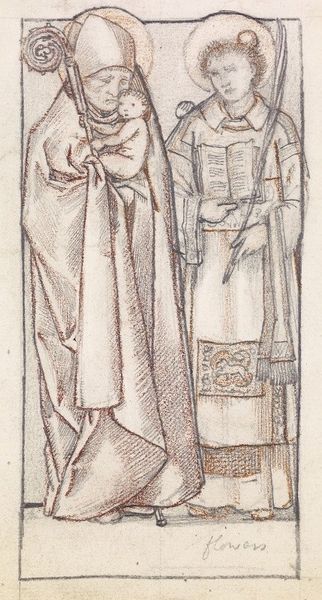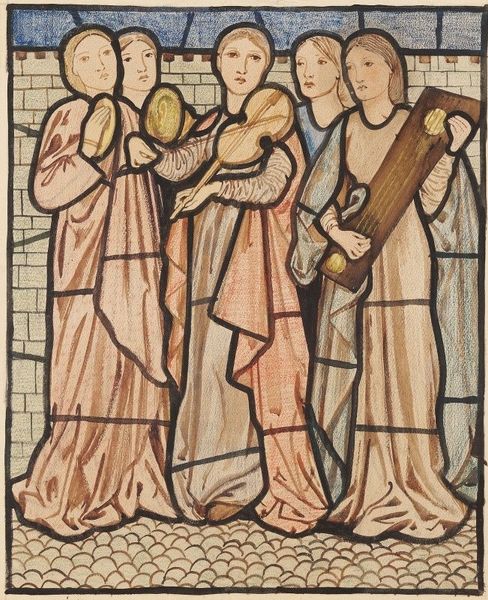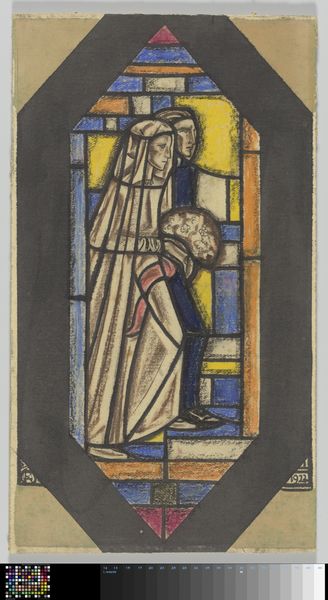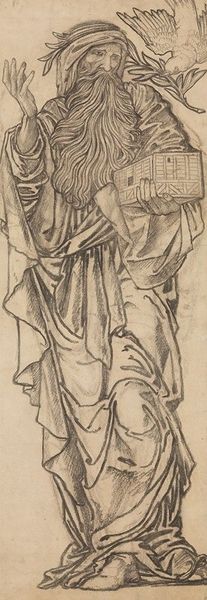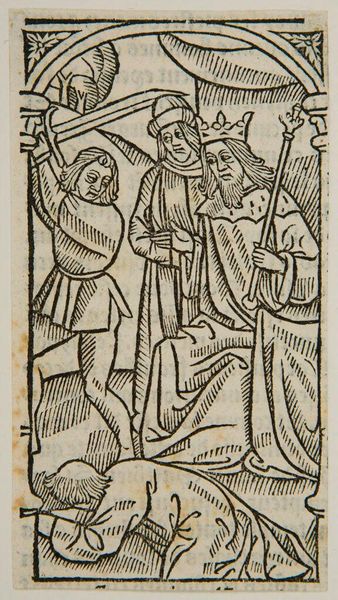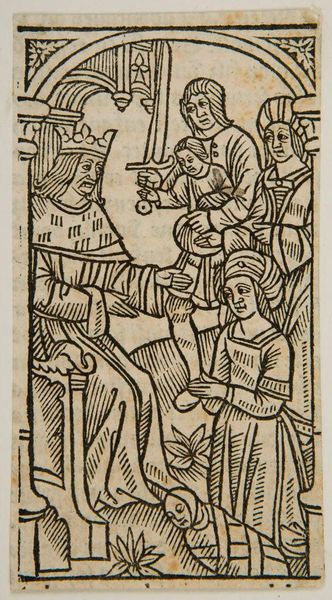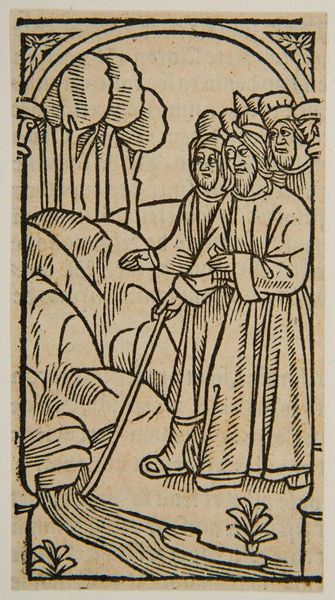
drawing, paper, ink
#
drawing
#
allegory
#
ink painting
#
landscape
#
figuration
#
paper
#
ink
#
coloured pencil
#
symbolism
#
pre-raphaelites
Copyright: Public Domain: Artvee
Editor: Here we have “Angels Playing Harps,” a drawing in ink on paper by Edward Burne-Jones. It gives me such a sense of otherworldly calm, like floating in a dream. What do you see in this piece, and how does it connect to the artistic and social currents of the Pre-Raphaelite movement? Curator: This drawing invites us to consider the complex dialogue between spirituality and representation. Burne-Jones, deeply embedded in the Pre-Raphaelite movement, challenged the rigid industrialization of Victorian England by looking to the art and ideals of the medieval period. Notice the androgynous features of the angels and their melancholic expressions. This deliberately challenges the traditional, often hyper-sexualized, depictions of women. How might the absence of overt gender markers influence the viewer’s interpretation? Editor: It’s interesting that you bring up gender, because I initially just saw angels. Now that you mention it, there’s a softening, almost an ambiguity to the figures, definitely a departure from typical portrayals. Curator: Precisely. This subversion is part of the Pre-Raphaelites’ broader challenge to societal norms. By idealizing a pre-industrial past and reimagining mythological figures, artists like Burne-Jones critiqued the materialism and social inequalities of their time. Considering that Burne-Jones’ circle had strong socialist leanings, how does the artwork speak to a rejection of Victorian commercial values? Editor: I guess by focusing on beauty and spirituality, it provides an escape, a kind of quiet resistance to the ugliness and harsh realities of industrial society. It makes me consider their art as a form of activism. Curator: Exactly! And by encouraging viewers to question established norms, they pave the way for evolving social attitudes regarding beauty, gender, and societal roles. Ultimately, Burne-Jones moves beyond aesthetics and uses allegory to express political convictions. Editor: It’s amazing how much is going on beneath the surface of such a seemingly tranquil image. I will never see those angel figures the same way. Curator: Absolutely, understanding context empowers us to decode visual languages and grasp art's potential as a catalyst for social progress.
Comments
No comments
Be the first to comment and join the conversation on the ultimate creative platform.



